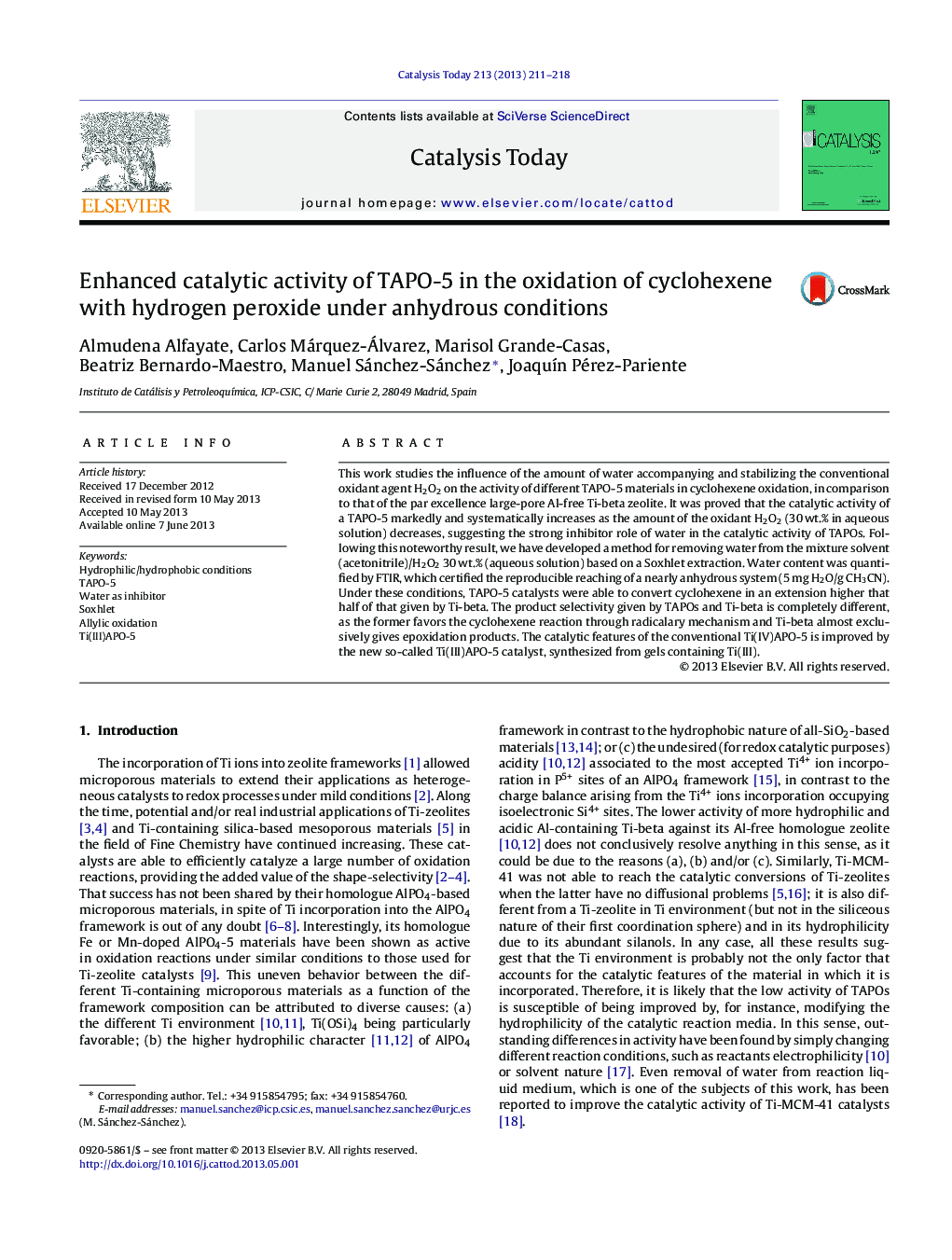| Article ID | Journal | Published Year | Pages | File Type |
|---|---|---|---|---|
| 54794 | Catalysis Today | 2013 | 8 Pages |
•TAPO-5 improves its activity in cyclohexene oxidation under anhydrous conditions.•Reaction mixture can become almost anhydrous by Soxhlet extraction.•TAPO-5 promotes the formation of products through allylic mechanism.•Ti(III)APO-5 is more active and selective to allylic products than Ti(IV)APO-5.
This work studies the influence of the amount of water accompanying and stabilizing the conventional oxidant agent H2O2 on the activity of different TAPO-5 materials in cyclohexene oxidation, in comparison to that of the par excellence large-pore Al-free Ti-beta zeolite. It was proved that the catalytic activity of a TAPO-5 markedly and systematically increases as the amount of the oxidant H2O2 (30 wt.% in aqueous solution) decreases, suggesting the strong inhibitor role of water in the catalytic activity of TAPOs. Following this noteworthy result, we have developed a method for removing water from the mixture solvent (acetonitrile)/H2O2 30 wt.% (aqueous solution) based on a Soxhlet extraction. Water content was quantified by FTIR, which certified the reproducible reaching of a nearly anhydrous system (5 mg H2O/g CH3CN). Under these conditions, TAPO-5 catalysts were able to convert cyclohexene in an extension higher that half of that given by Ti-beta. The product selectivity given by TAPOs and Ti-beta is completely different, as the former favors the cyclohexene reaction through radicalary mechanism and Ti-beta almost exclusively gives epoxidation products. The catalytic features of the conventional Ti(IV)APO-5 is improved by the new so-called Ti(III)APO-5 catalyst, synthesized from gels containing Ti(III).
Graphical abstractFigure optionsDownload full-size imageDownload high-quality image (175 K)Download as PowerPoint slide
